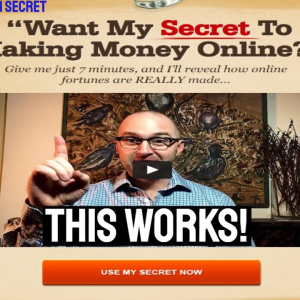To write an email that converts to business, you need to follow some key principles:
Subject line
Make sure your subject line is clear, concise, and relevant to the recipient. Use a subject line that immediately grabs their attention and tells them what the email is about.
Personalization
Address the recipient by their name and use a friendly and conversational tone. You can also reference their previous interactions with your business or any common interests or goals.
Value proposition
Clearly explain the benefits of your product or service and how it can solve the recipient’s pain points or challenges.
 Writing an email that converts to business requires careful attention to detail and a clear understanding of your target audience.
Writing an email that converts to business requires careful attention to detail and a clear understanding of your target audience.
Here are some tips to help you craft an effective business email:
Use a clear and concise subject line
Your subject line should grab the reader’s attention and clearly convey the purpose of your email.
Address the recipient by name
Addressing the recipient by name helps to personalize the email and create a connection with the reader.
Start with a strong opening
Your opening should be engaging and clearly state the purpose of your email. This could be a question, a statement, or a call to action.
Highlight the benefits
Focus on the benefits of your product or service and how it can help the recipient. Use specific examples and data to support your claims.
Keep it brief
People are busy and don’t have time to read lengthy emails. Keep your email concise and to the point.
Use a clear and professional tone
Use a professional tone throughout your email and avoid using slang or casual language.
Include a clear call to action
Be specific about what you want the recipient to do next. This could be to schedule a call, make a purchase, or sign up for a newsletter.
Use a clear signature: include a professional signature at the end of your email, including your name, title, and contact information.
By following these tips, you can increase the chances of your business email converting into a successful sale or partnership.
Importance of email subject line
The email subject line is one of the most important elements of your email, as it is the first thing the recipient sees when they receive your message. A well-crafted subject line can increase the chances of your email being opened and read, while a poorly written one can result in your email being ignored or deleted. Here are some tips for writing effective email subject lines:
Keep it short and concise: most email clients only display a certain number of characters in the subject line, so it’s important to keep it short and to the point. Aim for no more than 50 characters.
Be specific: your subject line should clearly convey the purpose of your email. If you’re sending a sales email, for example, include the name of the product or service you’re promoting.
Use action-oriented language: use action-oriented language in your subject line to create a sense of urgency and encourage the recipient to take action. Phrases like “limited time offer” or “don’t miss out” can be effective.
Personalize it: use the recipient’s name in the subject line to make the email feel more personal and increase the chances of it being opened.
Avoid using all caps or excessive punctuation: using all caps or too many exclamation marks can come across as unprofessional or spammy.
Test different subject lines: a/b testing different subject lines can help you determine which ones are most effective at getting your emails opened and read.
Remember, the subject line is the first impression the recipient will have of your email. Take the time to craft a clear, concise, and compelling subject line to increase the chances of your email converting to business.
Importance of personalization
Personalization is an important aspect of effective communication, and it can greatly increase the effectiveness of your business emails. Personalization refers to tailoring your message to the specific needs and interests of your recipient, and it can help to build trust, establish a connection, and increase engagement. Here are some tips for personalizing your business emails:
Use the recipient’s name: addressing the recipient by name is a simple yet effective way to personalize your email. It shows that you’ve taken the time to address them individually rather than sending a generic message to a large group.
Reference previous interactions: if you’ve had previous interactions with the recipient, such as a previous email exchange or a phone call, reference those interactions in your email. This shows that you remember the details of your previous conversations and that you value the relationship.
Mention common interests: if you have common interests with the recipient, such as a shared hobby or industry, mention those in your email. This can help to establish a connection and create a sense of rapport.
Provide customized content: if you have access to information about the recipient’s preferences or behavior, such as their past purchases or website activity, use that information to provide customized content in your email. This can help to increase engagement and encourage the recipient to take action.
Use a conversational tone: using a conversational tone in your email can help to create a sense of connection and make the recipient feel like they’re having a one-on-one conversation with you.
Personalization can help to make your business emails more effective and increase the chances of converting to business. By taking the time to tailor your message to the specific needs and interests of your recipient, you can establish a connection and build trust, which can ultimately lead to increased engagement and sales.
Importance of value proposition
A value proposition is a statement that outlines the unique benefits that a product or service offers to its customers. It is a critical component of any successful business strategy, as it helps to differentiate your brand from competitors and communicate your value to potential customers. Here are some tips for creating a strong value proposition:
Understand your target audience: before you can create an effective value proposition, you need to understand the needs and wants of your target audience. Conduct market research and analyze customer feedback to gain insights into what drives purchasing decisions in your industry.
Highlight your unique benefits: your value proposition should clearly outline the unique benefits that your product or service offers. This could include features, quality, pricing, customer service, or any other aspect that sets your brand apart from competitors.
Be specific: your value proposition should be specific and concrete rather than vague or generic. Use specific data and examples to support your claims and illustrate the benefits that customers can expect.
Use clear and concise language: your value proposition should be easy to understand and remember. Use clear, concise language that is free of jargon or technical terms.
Test and iterate: your value proposition is not set in stone, and you may need to iterate and refine it over time based on customer feedback and market changes. Continuously test and evaluate your value proposition to ensure that it remains relevant and effective.
A strong value proposition can help to differentiate your brand from competitors and attract customers to your product or service. By focusing on the unique benefits that your brand offers and communicating them clearly and effectively, you can increase the chances of converting potential customers to a business.
What are pre-written email sequences?
Pre-written email sequences, also known as email automation or drip campaigns, are a series of pre-written emails that are sent to a specific audience at predetermined intervals. These emails are designed to nurture leads, build relationships with customers, and ultimately drive sales.
Pre-written email sequences are typically set up using an email marketing platform and can be triggered based on specific actions or behaviors, such as subscribing to a newsletter, making a purchase, or abandoning a shopping cart. Once triggered, the pre-written emails are automatically sent to the recipient over a period of time, typically days or weeks apart.
The content of pre-written email sequences can vary depending on the specific goal of the campaign. For example, a welcome sequence might include a series of introductory emails that introduce the brand and its products or services, while a sales sequence might include a series of promotional emails designed to drive conversions.
Pre-written email sequences can be a highly effective way to build relationships with customers and drive sales, as they allow businesses to communicate with their audience in a targeted and personalized way. By automating the process of sending emails, businesses can save time and resources while still providing a valuable experience for their customers.
Write some call to action “for a certain pre-written email sequence.”
Sure, here are some examples of call-to-action (cta) statements that can be used in pre-written email sequences:
Sign up for our webinar: if your pre-written email sequence is focused on promoting a webinar or online event, you can include a cta that invites recipients to sign up for the event.
Schedule a demo: if your pre-written email sequence is designed to nurture leads and encourage them to learn more about your product or service, you can include a cta that encourages them to schedule a demo or consultation.
Buy now and save: if your pre-written email sequence is designed to promote a specific product or service, you can include a cta that encourages recipients to make a purchase by offering a discount or limited-time promotion.
Download our guide: if your pre-written email sequence is designed to provide educational content to your audience, you can include a cta that invites recipients to download a free guide or e-book.
Follow us on social media: if your pre-written email sequence is designed to build relationships with your audience and increase engagement, you can include a cta that encourages recipients to follow your brand on social media.
Share with a friend: if your pre-written email sequence is focused on promoting your brand or encouraging referrals, you can include a cta that encourages recipients to share your message with a friend or colleague.
Remember, the key to a strong cta is to be clear, specific, and compelling. Make sure your cta is aligned with the goals of your pre-written email sequence and that it provides a clear benefit or value to the recipient.
